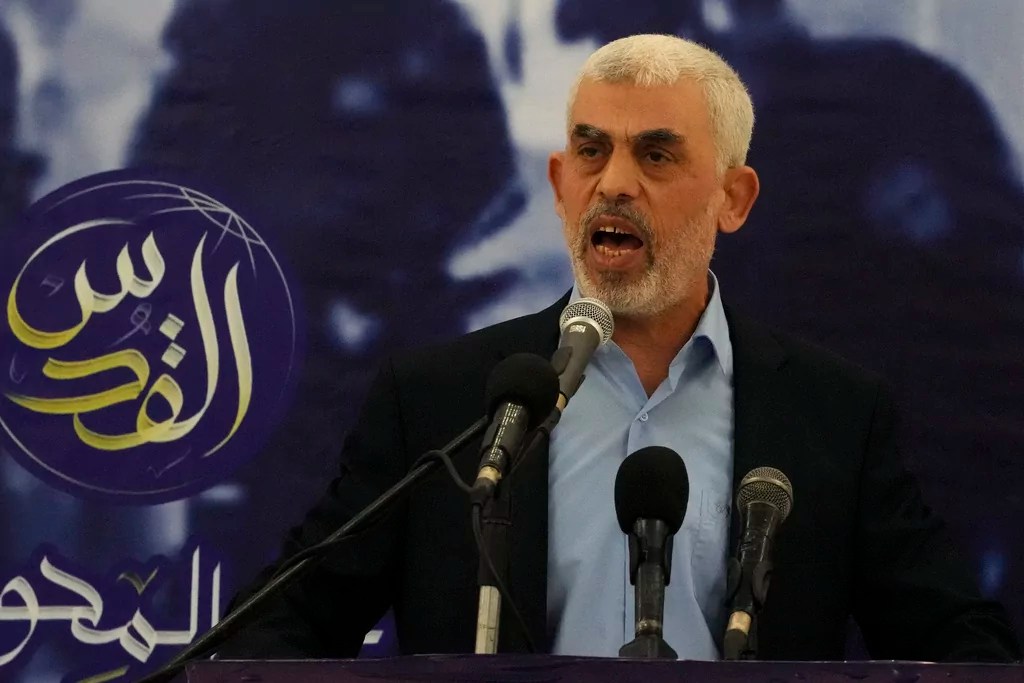The Israel Defense Forces capped months of long-term, intelligence-driven operations neutralizing key terrorist leaders in Gaza and Lebanon with the far more prosaic, and perhaps lucky, death of their most desired target.
When news of Hamas leader Yahya Sinwar’s apparent death was released Thursday morning, experts around the world began speculating on the nature of the operation that led to the groundbreaking assassination of Israel’s most wanted enemy.
However, his demise really appeared to have been more of a happy accident. The IDF has since reported that Sinwar, an architect of the Oct. 7 terrorist attacks that killed approximately 1,200 people in Israel last year, was killed in what, at first, appeared to be a routine engagement in Gaza.

Sinwar was killed in Rafah by IDF soldiers on regular patrol of the region. When three Hamas operatives were observed in a nearby building complex, a tank shell was fired into the structure, partially collapsing it.
It was only after the three militants were killed that Israeli soldiers noticed one corpse bore a striking resemblance to Hamas’s top commander. He was found wearing a bulletproof vest and without hostages nearby for protection. DNA tests later confirmed his identity. The IDF on Thursday evening released drone footage of Sinwar’s last moments, although his face is covered in the footage, and it would be impossible for the naked eye to identify him.
Drone Footage showing the Leader of Hamas, Yahya Sinwar armed with a Stick and hiding behind several Chairs on the Second Floor of a Building, right before his Elimination. pic.twitter.com/a3tOcfFXWV
— OSINTdefender (@sentdefender) October 17, 2024
What had been a routine patrol of Rafah ultimately resulted in the successful assassination of one of Hamas’s last surviving leaders.
The unexpected death of Hamas’s top leader contrasts significantly with recent operations by Israel that have systematically executed terrorist operatives through extreme and precise methods.

Most prominent is the use of explosives implanted in pagers used by Hezbollah to cause simultaneous detonations across the region. Israel’s allies and enemies alike were shocked last month when the bombs inside the AR924 communication devices were activated. As many as 3,000 Hezbollah operatives were killed or wounded.
The use of the sabotaged pagers was a plan years in the making — custom Taiwanese-made Apollo devices were crafted to perfectly meet Hezbollah’s needs and sold in bulk to the terrorist group via a middleman over an extended period of time. The explosives inside the pagers were kept dormant for up to two years before the IDF decided to act.
Similarly precise, but much more politically volatile, was the July operation that killed Hamas political figurehead Ismail Haniyeh in Iran.
Haniyeh and his security personnel died after Israel smuggled an explosive device into the terrorist leader’s secure guesthouse protected by the Islamic Revolutionary Guards Corps in the capital city of Tehran.

IDF commanders waited for weeks until Haniyeh arrived at the guesthouse following his appearance at the inauguration of Iran’s newest president, waited until they knew he was in the sabotaged room, and detonated the device. He was killed instantly.
Hezbollah secretary-general Hassan Nasrallah, a founding member, was assassinated by the IDF in an airstrike on the terrorist group’s headquarters in the capital city of Beirut. He died alongside other senior Hezbollah officials.
Hezbollah lost contact with Nasrallah’s successor, Hashem Safieddine, after a similar airstrike on an underground bunker in Dahieh earlier this month, which was also targeting a gathering of Hezbollah leadership. He has been declared dead by the IDF.

Sinwar had long been speculated to be hiding in ultrasecure facilities underground, surrounded by hostages and totally hidden from the view of Israel and its allies. Some experts expected him to evade justice for years via the labyrinth of tunnels under Gaza.
CLICK HERE TO READ MORE FROM THE WASHINGTON EXAMINER
Hamas is now critically low in commanders, and continuity of leadership for the terrorist group is becoming increasingly difficult to maintain.
Among the surviving Hamas leaders living outside Gaza, the most likely candidate to succeed Sinwar could be Khaled Mashal, a founder of Hamas and former chairman of its political bureau.
